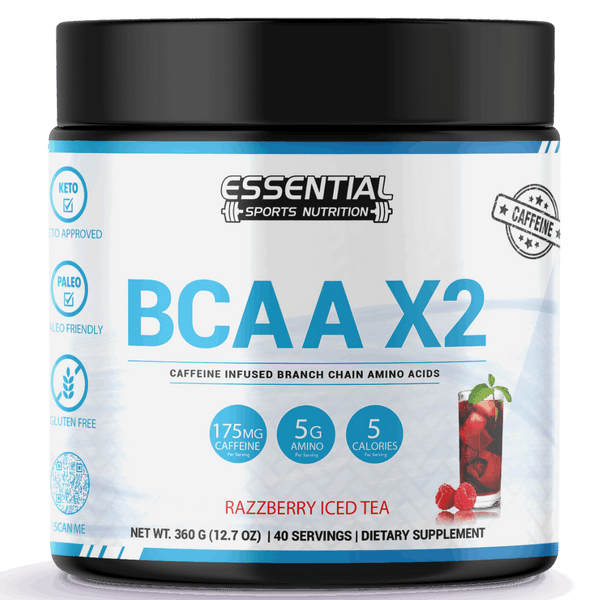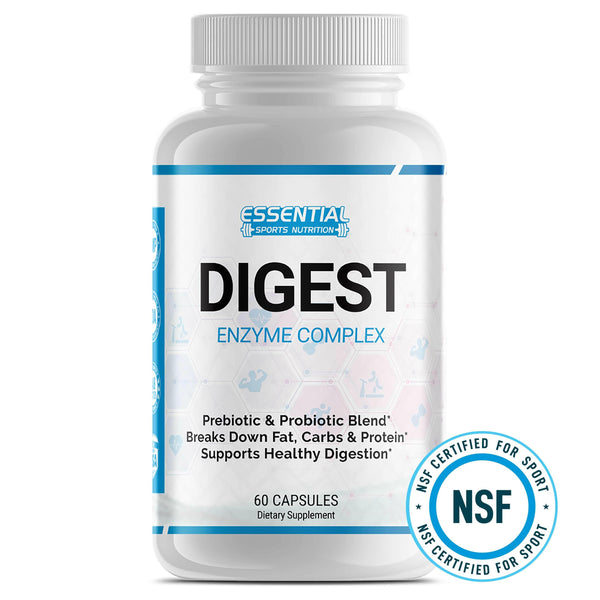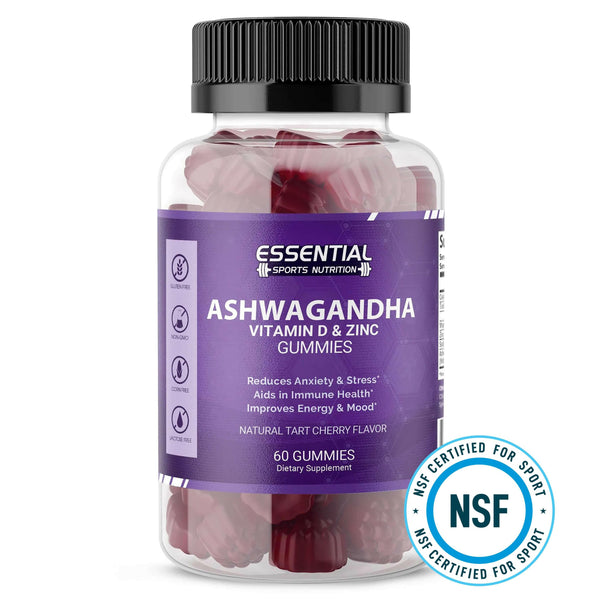Start Strong: Best Calf Exercises for Beginners to Build Leg Confidence
Starting your journey to strong, well-toned calves? You'll want to begin with basic calf exercises that are perfect for beginners. Try double-leg calf raises first; they're simple and effectively target both the gastrocnemius and soleus muscles. Stand with your feet flat, slowly lift your heels until you're on your tiptoes, then lower back down. Aim for two sets of 10 repetitions. Once you're comfortable, challenge yourself with single-leg calf raises to improve balance and muscle symmetry. Incorporate these exercises into your routine several times a week for the best results. Ready for more advanced moves? There's plenty more to explore that will enhance your strength and stability.

Key Takeaways
Start with double-leg calf raises to build foundational strength and endurance.
Incorporate seated calf raises to specifically target and strengthen the soleus muscle.
Progress to single-leg calf raises to enhance balance and correct muscle imbalances.
Ensure each exercise is performed with proper form to prevent injuries and maximize effectiveness.
Gradually increase repetitions and resistance as strength improves to maintain challenge and progress.
Understanding Calf Muscles
To effectively strengthen your calves, it's important to understand that the calf muscles, consisting of the gastrocnemius and soleus, play distinct roles in knee and ankle movement. The gastrocnemius, which crosses behind your knee, is important for knee flexion and plantarflexion—this is the movement where you point your toes. The soleus beneath the gastrocnemius primarily contributes to plantarflexion and enhances ankle stability.
Knowing these specific roles helps you target each muscle accurately in your workout routines. As a beginner, developing balanced strength in both muscles is crucial to improve overall mobility and prevent injuries. You don't want to jump into any exercise; understanding the function of each muscle guides you in choosing the right exercises that effectively enhance both strength and flexibility.
Start with exercises that emphasize these functions. For example, seated calf raises are fantastic for isolating the soleus, while standing calf raises help target the gastrocnemius. Integrating these exercises into your routine ensures that both muscles work together harmoniously, providing you with stronger, more resilient calves ready to tackle any challenge.
Basic Calf Stretches

Incorporating basic calf stretches into your exercise routine can greatly boost your lower body's flexibility and mobility, preventing injuries and enhancing overall performance. These beginner-friendly stretches are simple yet effective, targeting your calves' gastrocnemius and soleus muscles, which are vital for your lower body's health.
Start by standing near a wall for support. Extend one leg behind you, keeping both feet flat on the ground and your back heel pressed down. You'll feel a gentle stretch in the calf of your extended leg. Hold this position for about 30 seconds, then switch legs. This stretch enhances mobility and helps prevent injuries by reducing tightness.
Another effective stretch involves sitting with your legs extended in front of you. Reach toward your toes, keeping your heels on the ground. You'll notice a stretch along the back of your lower legs as you reach. Hold this position to improve flexibility in your calves' muscles and connective tissues.
Regularly performing these stretches will ensure your calves remain flexible and strong, supporting your mobility and safeguarding you against potential lower-body injuries. Keep it up, and you'll notice significant improvements in your lower body performance.
Double-Leg Calf Raises
Building calf muscle strength and endurance, double-leg calf raises are an excellent starting point for beginners. This foundational exercise efficiently targets your calves' gastrocnemius and soleus muscles. It's beginner-friendly and a staple that can be effortlessly incorporated into your workout routine.
To perform double-leg calf raises, start by standing with your feet hip-width apart. Make sure your posture is straight and balanced. Slowly raise your heels off the ground, elevating to the balls of your feet. Hold this peak contraction briefly to maximize muscle engagement, then gradually lower your heels back to the ground. Aim for two sets of 10 repetitions each to boost your calf strength and muscle endurance.
Here's a quick guide to get you started:
| Step | Description |
|---|---|
| Position | Stand with feet hip-width apart. |
| Lift | Elevate heels, balancing on the balls of your feet. |
| Hold | Pause at the top for muscle engagement. |
| Lower | Gently return heels to the floor. |
| Repeat | Complete 2 sets of 10 reps each. |
Embrace these calf raises as they lay a strong foundation for more advanced exercises in the future. Stick with it, and you'll definitely see improvements in your calf strength and endurance.
Single-Leg Calf Raises
After mastering double-leg calf raises, you'll find single-leg calf raises are a fantastic way to enhance your calf strength and balance further. This progression challenges your calf muscles and greatly boosts your ankle strength and mobility. Perfect for beginners, this exercise steps up the game by correcting muscle imbalances and improving overall lower body function.
Here's how you can incorporate single-leg calf raises into your routine:
Find Your Balance: Start by standing on one foot near a wall or chair for support. Keep your core tight and gaze forward to maintain balance.
Execute the Raise: Slowly lift your heel as high as possible, focusing on engaging your calf muscle. Hold at the top for a second before lowering back down with control.
Repeat and Switch: Perform 10-12 repetitions on one leg, then switch to the other. Aim for 3 sets per leg.
As you get stronger, you'll notice improvements in your proprioception, which is your body's ability to sense its position in space. Regular practice of single-leg calf raises not only boosts muscle strengthening but also enhances your balance, making you more adept at handling various physical activities and reducing the risk of falls.
Seated Calf Exercises
Moving on to seated calf exercises, you'll effectively target the deeper soleus muscle, which is essential for lower leg strength and stability. The Seated Calf Raise is a cornerstone in this regimen, focusing on strengthening and toning your lower calf. When performed with proper form, this exercise guarantees that the soleus muscle is adequately engaged, providing a solid foundation for progressive overload.
To start, sit with your knees at a 90-degree angle and place the balls of your feet on a raised platform. You can add resistance by placing weight on your thighs, just above the knees. It's vital to press up through the balls of your feet and lift your heels as high as possible, then slowly lower them back down. This controlled movement maximizes engagement and benefits.
Incorporating these exercises into your workout routine not only enhances the strength of your soleus muscle but also contributes to improved ankle stability. Consistently increasing the resistance as you progress ensures continuous improvement and challenge. Remember, maintaining proper form is essential—not only to target the muscle correctly but also to prevent injury. Make seated calf exercises a regular part of your fitness journey for robust and resilient lower legs.
Dynamic Exercises for Your Calf Muscles

As you shift from seated exercises, dynamic calf workouts offer you a chance to enhance your strength and coordination. You'll explore calf raise variations that challenge your muscles in new ways, use jump rope techniques to boost your cardiovascular fitness, and discover the numerous benefits of stair climbing. Each of these activities not only builds your calves but also improves your overall agility and endurance.
Calf Raise Variations
Exploring calf raise variations can significantly enhance your lower body strength and calf muscle definition. As a beginner, focusing on these exercises guarantees you build muscle effectively while maintaining proper form. Here are a few variations to incorporate into your routine:
Single-Leg Calf Raises: Start by balancing on one leg, which enhances stability and increases resistance on each calf. Progress gradually to maintain balance.
Seated Calf Raises: Ideal for targeting the soleus muscle under different resistances, perfect for when you're starting out or as a recovery exercise.
Weighted Calf Raises: Add weights gradually to increase resistance, ensuring continuous muscle development and strength.
Jump Rope Techniques
Jumping into jump rope techniques can greatly boost your calf muscle strength and overall cardiovascular health. When you jump rope, focus on landing softly on the balls of your feet. This precise action engages your gastrocnemius and soleus, the key calf muscles, enhancing both tone and definition. Jump rope is a high-intensity workout, building calf endurance and markedly improving your cardiovascular fitness.
Incorporate variations like double unders or high knees to challenge your calves further. Each session transforms your lower legs into powerhouses of strength and stamina. Your calves become more defined and toned as you consistently practice these techniques. So grab your rope, and let's get jumping for remarkable results!
Stair Climbing Benefits
After mastering jump rope techniques, stair climbing is another effective way to enhance your calf muscles and overall fitness. This dynamic workout targets your gastrocnemius and soleus muscles and boosts your ankle flexibility and stability – key components in achieving balance.
Here's why stair climbing is great for beginners:
Builds Endurance: Gradually increases your stamina as you repetitively power up steps.
Enhances Stability: Improves your ability to maintain balance, which is essential in everyday movements.
Functional Movement: Mirrors real-life activities, making it a practical component of any fitness regime.
Incorporate stair climbing into your routine to see a remarkable improvement in your calf strength and overall physical stability.
Incorporating Calf Muscle Exercises

To effectively incorporate calf exercises into your fitness regimen, start with basic moves like double-leg calf raises and gradually increase the challenge by adding weights and single-leg variations. This approach ensures you're building a solid foundation in strength training specifically tailored for your lower body. Focusing on these muscles enhances overall balance and prepares you for more intense workouts.
As you gain confidence and strength, move on to single-leg calf raises. This progression targets each calf individually, further improving your balance and muscle symmetry. Incorporate seated calf raises to diversify your routine and specifically strengthen the soleus muscle, which is important for lower body stamina and stability.
Preventing Calf Injuries

Before your next workout, it's important to understand how properly warming up and stretching your calf muscles can prevent injuries. Calf exercises are a fantastic way to strengthen and tone, but taking the necessary precautions is vital for your safety and overall muscle health.
Here are three key strategies to make sure you're keeping your calf muscles safe:
Proper Warm-up and Stretching: Always start with a gentle warm-up to increase blood flow to your calf muscles. Follow this with dynamic stretches to prepare them for the workout ahead. This approach reduces the risk of strains and tears.
Use Proper Footwear: Investing in shoes with adequate arch support and cushioning is non-negotiable. Proper footwear not only supports your calves but also prevents overuse injuries. It's a simple yet effective way to safeguard your muscles during calf exercises.
Gradual Progression and Rest: Increase the intensity and duration of your exercises gradually. Allow your muscles time to adapt to avoid overloading them. Incorporate days of rest and recovery to give your calf muscles a chance to rebuild and strengthen.
Conclusion

Ready to embark on the journey? Start simple with stretches and basic raises. As you gain strength, challenge yourself with single-leg variations and dynamic movements. Remember, consistency is key. But, beware—the path to stronger calves is addictive! You'll crave progress and newfound power at every step. So, what are you waiting for? Begin, stay motivated, and watch as your calves become unstoppable. Prevent injuries by pacing yourself. The road to robust calves begins now!
Best Calf Exercises at Home and for Beginners FAQs
Q: What are the best calf exercises for beginners?
A: The best calf exercises for beginners include standing calf raises, seated calf raises, single-leg calf raises, calf raises on a leg press machine, and calf presses. Gradually add weights and consistently challenge your muscles thrice weekly for peak growth.
Q: How does calf muscle anatomy impact calf exercises?
A: Understanding calf muscle anatomy, specifically the gastrocnemius and soleus muscles, can help effectively target and strengthen these muscles through exercises.
Q: What is the difference between seated calf raises and standing calf raises?
A: Seated calf raises primarily target the soleus muscle of the calf while standing calf raises engage both the gastrocnemius and soleus muscles for a more comprehensive workout.
Q: How can one strengthen their calves using single-leg calf raises?
A: Single-leg calf raises are effective in calf strengthening as they require balance and focus on engaging one calf muscle at a time for increased muscle activation and growth.
Q: What are the benefits of doing calf exercises at home?
A: Performing calf exercises at home allows for convenience, flexibility, and cost-effectiveness, enabling individuals to build strong and toned calf muscles without needing specialized equipment.
Q: How can calf exercises contribute to muscle growth and development?
A: Calf exercises, such as calf raises and presses, target the calf muscles, stimulate muscle fibers, and promote muscle growth, leading to stronger, bigger, and more defined calf muscles over time.
Q: What are the key factors to consider when choosing calf exercises for building muscle?
A: When selecting calf exercises for building muscle, factors such as proper form, progressive overload, exercise variety, and consistency in training are essential to effectively targeting and developing the calf muscles.
Q: How Do I Start Training My Calves?
A: Start training your calves with simple bodyweight calf raises. Focus on form and gradually increase intensity. Aim for consistency, training 2-3 times a week, and don't forget to stretch!
Q: What Is the Best Exercise for Your Calves?
A: Calf raises are the best exercise for your calves. They're simple, effective, and can be intensified with weights. Stay consistent and focus on form; you'll see strength and stability improvements!
Q: How Can I Improve My Calves at Home?
A: Ironically, you don't need a gym to build those calves! Try bodyweight calf raises at home, use stairs for resistance, and stretch against a wall. It's simple, effective, and surprisingly challenging!























